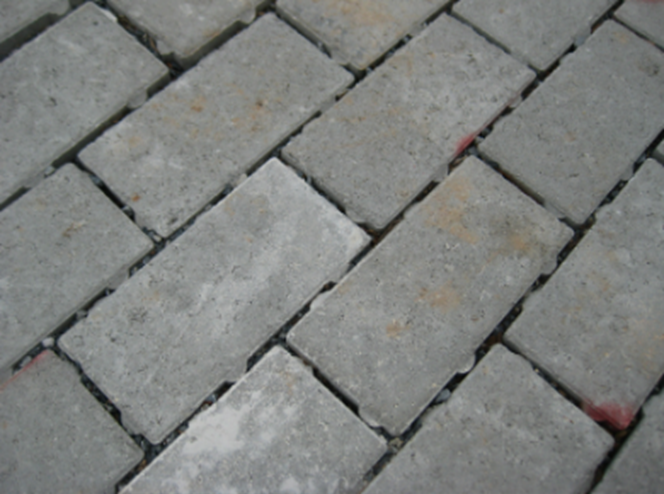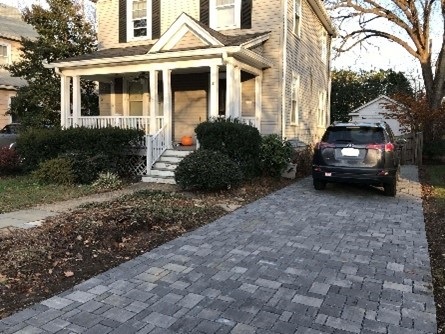Multi-Family and Non-Residential: Permeable Parking Lot/Driveways
The Stormwater Utility disputes and appeals process is open now through Monday, Oct. 20.
Courtesy notices regarding recertification have been sent. Please note: Recertification does not begin until November 1, but new photos must be taken during the summer growing season for conservation landscaping and raingardens. Review the credit re-certification guidelines.
For more detailed information, please refer to the Stormwater Credit Manual.
Definition: Replace traditional driveway or parking lot spaces with permeable pavers or turf block pavers
Guidelines: Permeable pavements are alternative paving surfaces that allow rainfall to filter through voids in the pavement surface into an underlying stone reservoir, where it can soak into the soil. Failure to perform regular maintenance such as vacuuming or power washing, will lead to clogged pores in the pavement surface that reduce its permeability over time.
A permeable paver guidance document is provided to assist you to achieve the best results. The minimum documentation required to qualify for credit is shown below.
Common Ineligible Pavement Types: Gravel, ribbon, traditional brick, and paver driveways are not eligible for credit.
Existing or New: Both are eligible
Annual or Ongoing credit: Ongoing
Percent Credit: 10% (no duplication)
Minimum: 300 square feet
Frequency of re-certification: Every 2 years
Required Documentation:
|
Documents
|
Additional Information
|
- Before photos (must be recent)
|
 |
- Diagram showing location and surface area
- 300 square feet minimum area
|

|
- Recent photos of excavation (minimum 12 inches total)
|

|
- Materials receipts for paver or turf stone materials and stone base (or contractor invoices)
|
Follow manufacturer’s specifications for installation of the permeable pavers or turf block pavers
|
- Recent close-up photo of permeable pavers or turf block
- Recent photo of full permeable driveway area
- Recent perspective photo of permeable driveway area with nearest structure in background.
|
 
|
|
Credit re-certification
|
- Recent close-up photo of permeable pavers
- Recent photo of full permeable driveway area
- Recent perspective photo of permeable driveway area with nearest structure in background.
|
 
|
Tips for success:
- Be sure to take all required photo types.
- Inspect your pervious surface regularly to evaluate the condition and performance of the pavement. It’s especially important to avoid clogging the openings in your pervious surface. These openings allow water to infiltrate and soak into the ground. Don’t use sand or other materials that may clog openings on the pervious surface, and periodically sweep off leaves and other organic debris. Follow any additional manufacturer recommendations for the type of pervious surface installed. The following are annual maintenance tips for permeable pavements:
- Inspect the surface of the permeable pavement for evidence of soil deposits, organic debris, staining or ponding that may indicate surface clogging. If any signs of clogging are noted, use a shop vacuum to remove deposited material. Then, test sections by pouring water from a 5-gallon bucket to make sure they work.
- Inspect the pavement surface, looking for signs of surface deterioration, such as slumping, cracking, spalling or broken pavers. Replace or repair affected areas, as necessary.
- If there is an observation well, check it three days after a rainstorm of ½ inch or more. If standing water is still observed in the well after three days, this is a clear sign that clogging of the soil under the pavement is occurring.
- If applicable, check inlets, pre-treatment cells and any flow diversion structures for sediment buildup and structural damage. Note if any sediment needs to be removed.
- Inspect the areas that drain to the permeable surface for controllable sources of sediment or erosion.
- Typical reasons for denial of re-certification: paver openings are clogged with debris. For turf block pavers, evidence of debris accumulation and/or absence of vegetation.